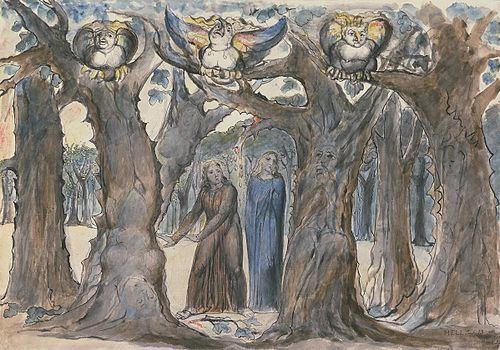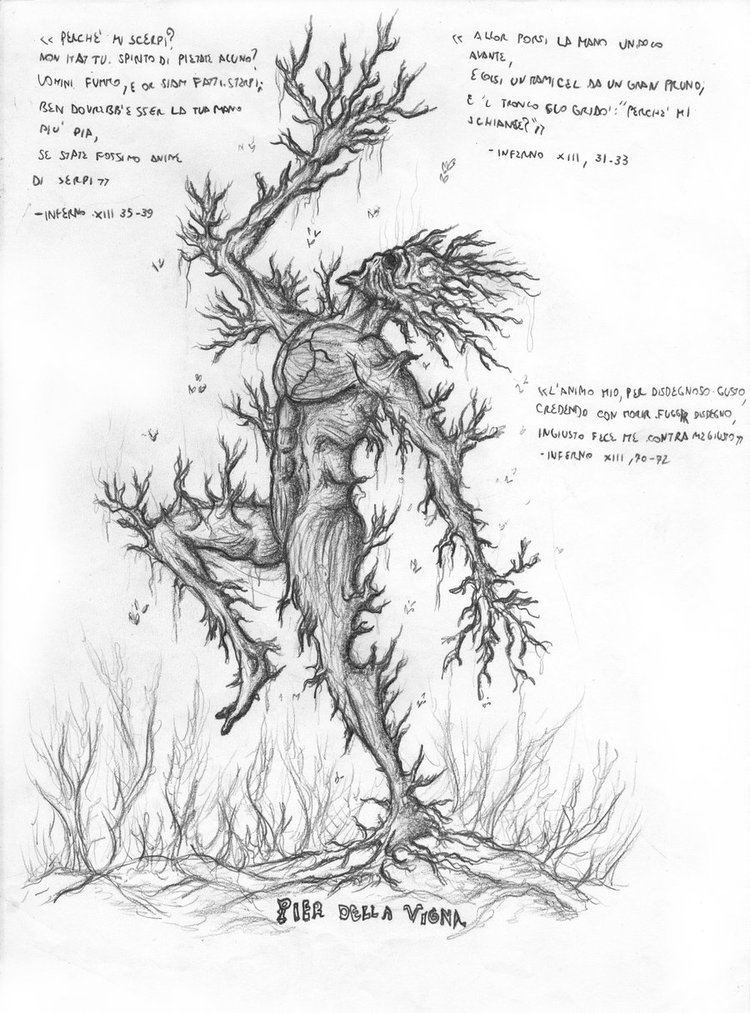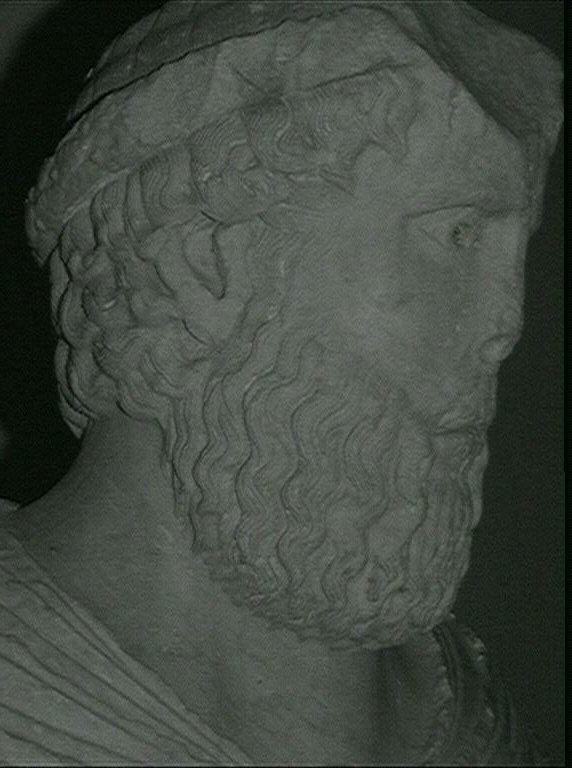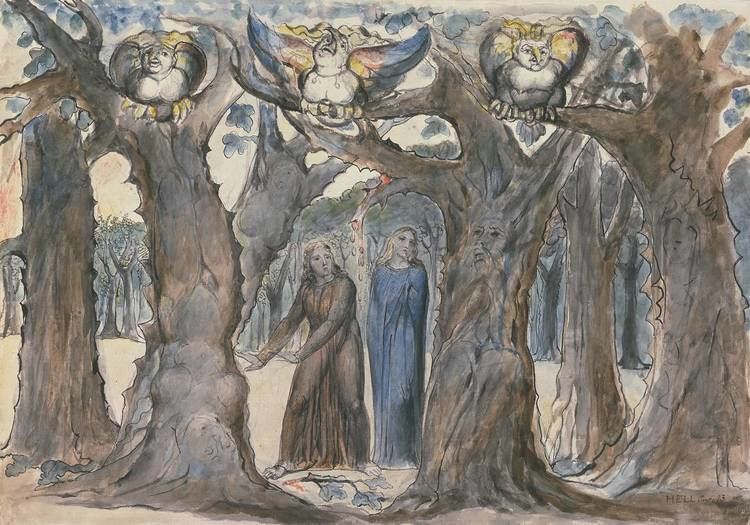Name Pietro Vigna | Died 1249, San Miniato, Italy | |
 | ||
People also search for William Blake, Dante Alighieri, Giuseppe de Liguoro | ||
Pietro della Vigna
Pietro della Vigna, (also Pier delle Vigne, Petrus de Vineas or de Vineis; c. 1190–1249), was an Italian jurist and diplomat, who acted as chancellor and secretary (logothete) to Emperor Frederick II. Accused of lèse majesté, he was falsely imprisoned and committed suicide soon after. He is mentioned in The Divine Comedy by Dante Alighieri.
Contents

Life and work

He was born in 1190 in Capua under humble circumstances and studied law at Bologna. Through his classical education, his ability to speak Latin and his poetic gifts, he gained the favour of Frederick II, who made him his secretary, and afterwards judex magnae curiae, councillor, governor of Apulia, prothonotary and chancellor. The emperor sent him to Rome in 1232 and 1237 to negotiate with the pope; to Padua in 1239 to induce the citizens to accept imperial protection; and to England in 1234–1235 to arrange a marriage between Frederick II and Isabella of England, the sister of King Henry III of England.

He proved a skillful and trustworthy diplomat, and he persistently defended the emperor against his traducers and against the pope's menaces. But at the First Council of Lyon (1245), which had been summoned by Pope Innocent IV, Pietro della Vigna entrusted the defence of his master to the celebrated jurist Taddeo of Suessa, who failed to prevent his condemnation.
Pietro della Vigna was a distinguished man of culture. He encouraged science and the fine arts, and contributed much to the welfare of Italy by his legislative reforms. He was also the author of some vernacular poetry, of which two canzoni and a sonnet are still extant.
His letters, mostly written in the name of the emperor and published by Iselin (Epistolarum libri vi, 2 v., Basel, 1740), contain much valuable information on the history and culture of the 13th century. A collection of the laws of Sicily, a Tractatus de potestate imperiali, and another treatise, On Consolation, in the style of Boethius, are also attributed to him.
The Guelphic tradition accuses Pietro della Vigna, as well as the emperor and his court, of heresy. It was even stated, probably without any foundation, that they were the authors of the famous work, De Tribus Impostoribus, wherein Moses, Christ and Muhammad are blasphemed.
Imprisonment and suicide
In March 1249, members of the royal household attempted to poison Frederick II. The emperor had Pietro imprisoned and chained in hands and feet in a tower in Pisa. After a year of imprisionment, he was visited by the emperor, but he was unable to communicate and/or defend himself before the confession made by the emperor himself as he and his guards had his eyes ripped out and then they left soon afterwards. Unable to bear this disgrace, della Vigna fell to his knees with his outstretching hands, begging for mercy, before smashing his head on the stone wall of his dungeon until his brain dashed forth from his cracked skull causing his death. {TH}
In The Divine Comedy
As a suicide, he appears as one of the damned in the Woods of Suicide in Dante's Inferno", Circle VII, Ring II, Canto XIII: Violent against the self: suicides and profligates. Della Vigna reveals his identity to the travelers Dante and Virgil: "I am he that held both keys of Frederick's heart/ to lock and to unlock and well I knew/ to turn them with so exquisite an art."
Dante's portrayal of della Vigna emphasises his skill as a rhetorician. His syntax is complex and tangled, like the thornbushes. At one point, Dante echoes it: "I think he thought that I was thinking", according to John Ciardi's translation. In placing him among the suicides rather than the traitors, Dante is affirming that della Vigna was falsely or wrongly accused.
In the 19th century, William Blake illustrated the Divine Comedy and depicted della Vigne in The Wood of the Self-Murderers: The Harpies and the Suicides.
